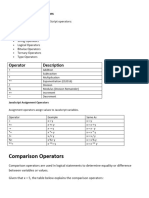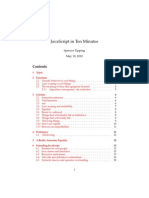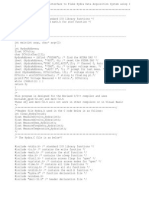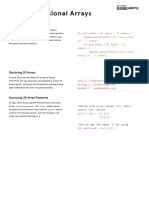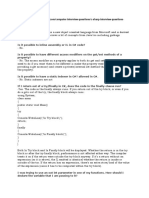0% found this document useful (0 votes)
48 views38 pagesNodejs Lesson 2
This document provides an overview of JavaScript functions and objects. It discusses how functions are defined with the function keyword and parameters, and how they are invoked. It also explains how objects are defined using object literals with properties and methods. Examples are provided to demonstrate defining functions, accessing object properties and methods, and using the this keyword in methods. Homework assignments involve executing a sample function, defining an object with member properties and a method to display information, and adding methods to assign property values.
Uploaded by
Cheong Yen LeongCopyright
© © All Rights Reserved
We take content rights seriously. If you suspect this is your content, claim it here.
Available Formats
Download as PDF, TXT or read online on Scribd
0% found this document useful (0 votes)
48 views38 pagesNodejs Lesson 2
This document provides an overview of JavaScript functions and objects. It discusses how functions are defined with the function keyword and parameters, and how they are invoked. It also explains how objects are defined using object literals with properties and methods. Examples are provided to demonstrate defining functions, accessing object properties and methods, and using the this keyword in methods. Homework assignments involve executing a sample function, defining an object with member properties and a method to display information, and adding methods to assign property values.
Uploaded by
Cheong Yen LeongCopyright
© © All Rights Reserved
We take content rights seriously. If you suspect this is your content, claim it here.
Available Formats
Download as PDF, TXT or read online on Scribd
/ 38





























